Early Christian 14-01-2004 Handout and Slides
Handout
Dr Cecily Hennessy
Early Christian and Early Byzantine
This lecture will look at material from the third to the sixth century. During this period the centre of the Roman empire shifted from Rome to Constantinople in the east, and Christianit emerged as the dominant religion, becoming legalised in 311 / 12. Early artists developed ways to depict the new narratives and concepts of Christianity, often borrowing from Judaic and Pagan heritage in terms of function, iconography, and style. We will focus on an early church in Dura Europos, on the edge of the Christianised world, and on the catacombs in Rome, which show firs attempts at developing a visual vocabulary. S. Costanza in Rome (pre 354), the Mauseoleum of Galla Placidia (424-30) in Ravenna, and S. Maria Maggiore (432-440) in Rome can be used to explore the changes in Christian decorative programmes as church doctrine became formulated. We will also look at S. Vitale (540-548) in Ravenna with its fine mosaics of sacred and secular rulers. We will also be looking at portable objects: metalwork, ivories, manuscripts and finally at panel paintings, and asking questions about the origins and function of Christianised art, particularly in its relation to the classical tradition.
Dura Europos
Slide 1: Dura Europos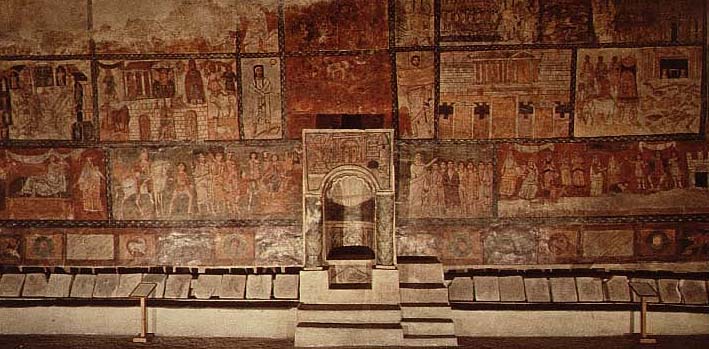
The Dura-Europos Synagogue
In 256 CE the Dura-Europos synagogue was filled in to housetop level with an earthen embankment intended to stave off a Persian invasion. The city ‘s defenders may have destroyed the synagogue in the short term, yet they preserved its beautiful wall – paintings for posterity by protecting them from rain and sunlight.
The synagogue, discovered in 1932, consists of a Forecourt and House of Assembly measuring 14 x 8.7 m (please see the plan of the synagogue). The ornate Torah shrine in the western wall faces Jerusalem. Kraeling estimates that the synagogue ‘s benches could seat 65 people. The presence of the wall – paintings on Jewish themes and the Torah shrine help in identifying the building as a synagogue.
Synagogue, early 3 Century, Damascus, National Museum, detail: the Idol of Dagon destroyed and the ark being led away
Slide 2: Dura Europa mural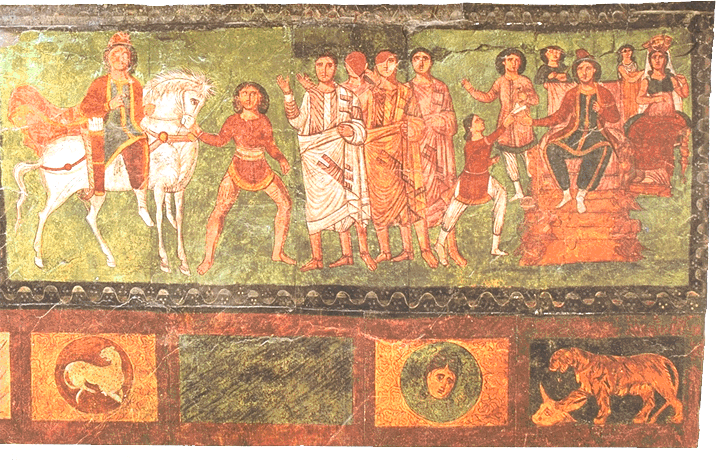
Slide 3: Dura Europa Christian Church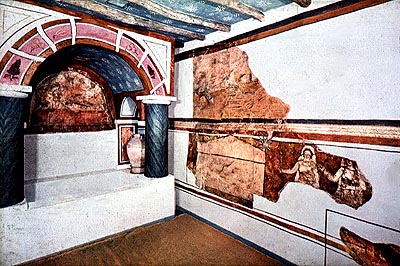
Dura Europos, Christian building, early 3 Century, Yale, University Art Gallery, detail: Good
Shepherd
Catacombs
Catacomb, passageway,
Slide 4: Cubiculum Leonis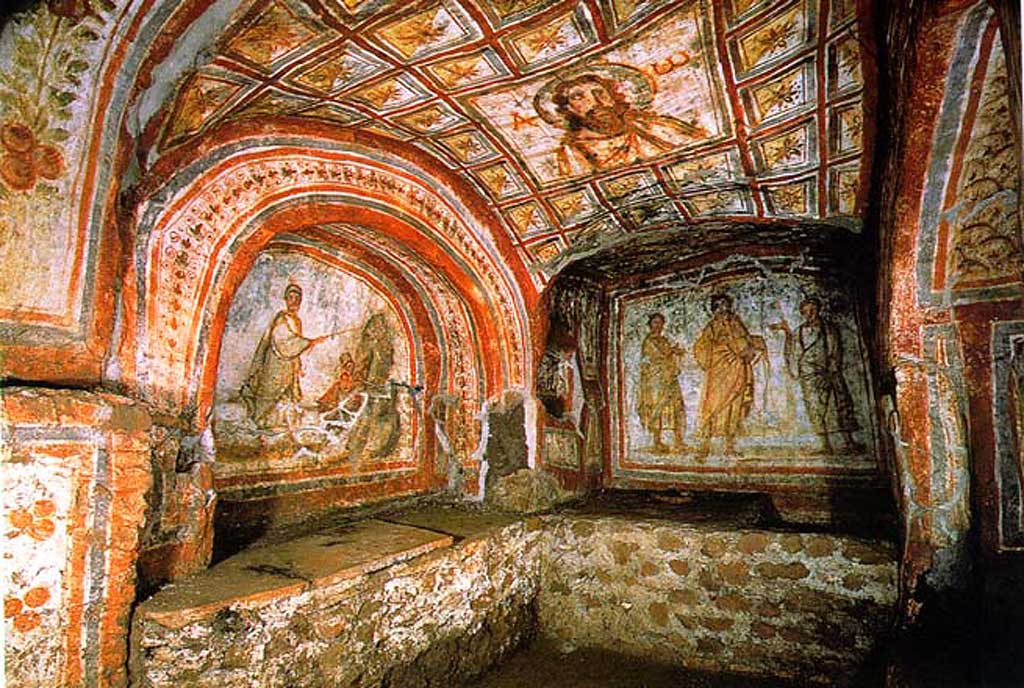
, Commodilla catacomb, late 4 Century
Slide 5: Arcosolium of cubiculum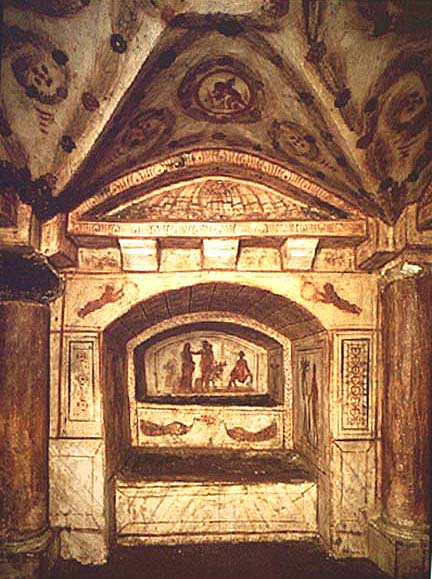
C, 320, Via Latina catacomb; Jonah sarcophagus, last quarter 3
Slide 6: Priscilla catacomb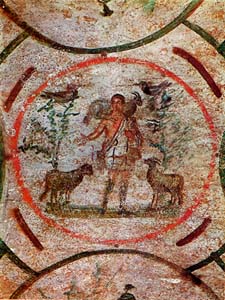
, late 3, Good Shepherd, Story of Jonah
Rome Via Latina Catacomb Samson and the Lion c350-400. jpg
Slide 7: Via Latina catacomb(image not found), Hercules in the Garden of the Hesperides; Daniel in the Lions’ Den
Sarcophagus
Slide 8: Sarcophagus of Junius Bassus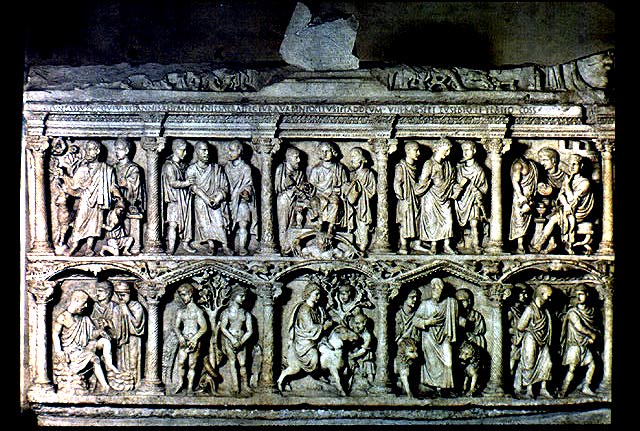
, 359, Vatican, detail: Christ ‘s entry into Jerusalem 4 – 6th C hristian buildings and their decoration
Slide 9: S. Costanza(image not found), probably pre 354, Rome, interior, ambulatory ceiling mosaics; sarcophagus
Rome S Costanza Ambulatory vault mosaics pressing wine detail c350.jpg
Rome S Costanza Ambulatory vault mosaics pressing wine more detail c350.jpg
Rome S Costanza Ambulatory.jpg
Rome S Costanza c350.jpg
S. Maria Maggiore, 432 – 440, Rome, interior; Triumphal arch mosaics: Christ’s Nativity
Rome S Maria Maggiore Adoration of the Magi Triumphal Arch mosaics. jpg
Rome S Maria Maggiore looking east 432-40. jpg
Slide 10: Mausoleum of Galla Placidia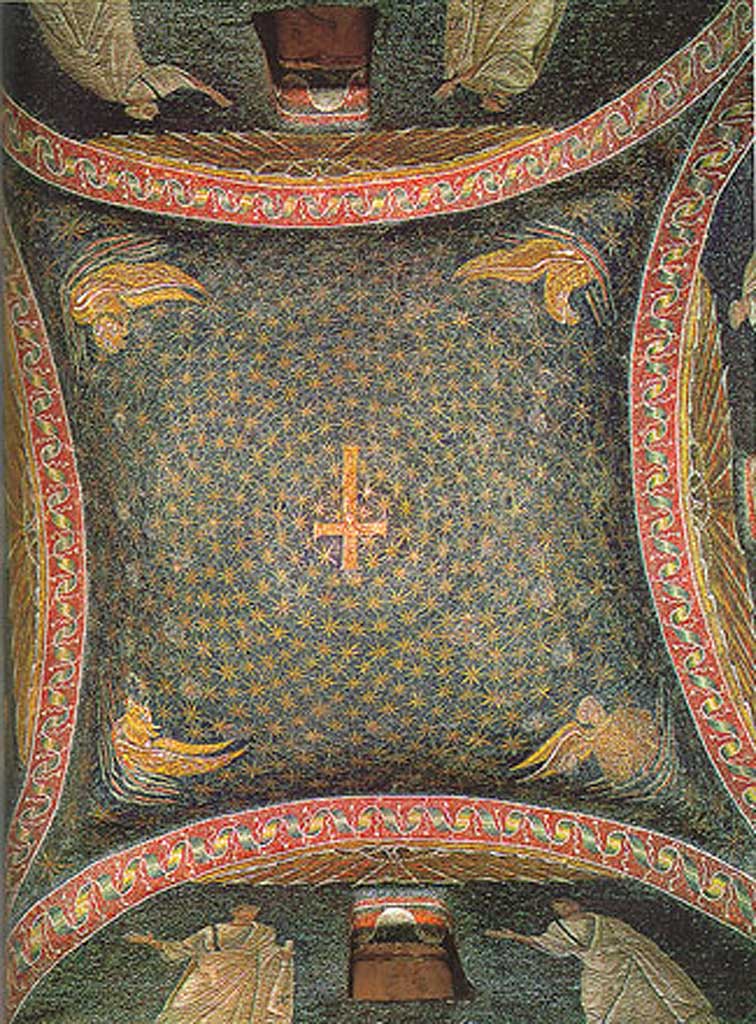
, plan, 424 – 30, Ravenna, exterior, interior with S. Lawrence and vault
Slide 11: S. Vitale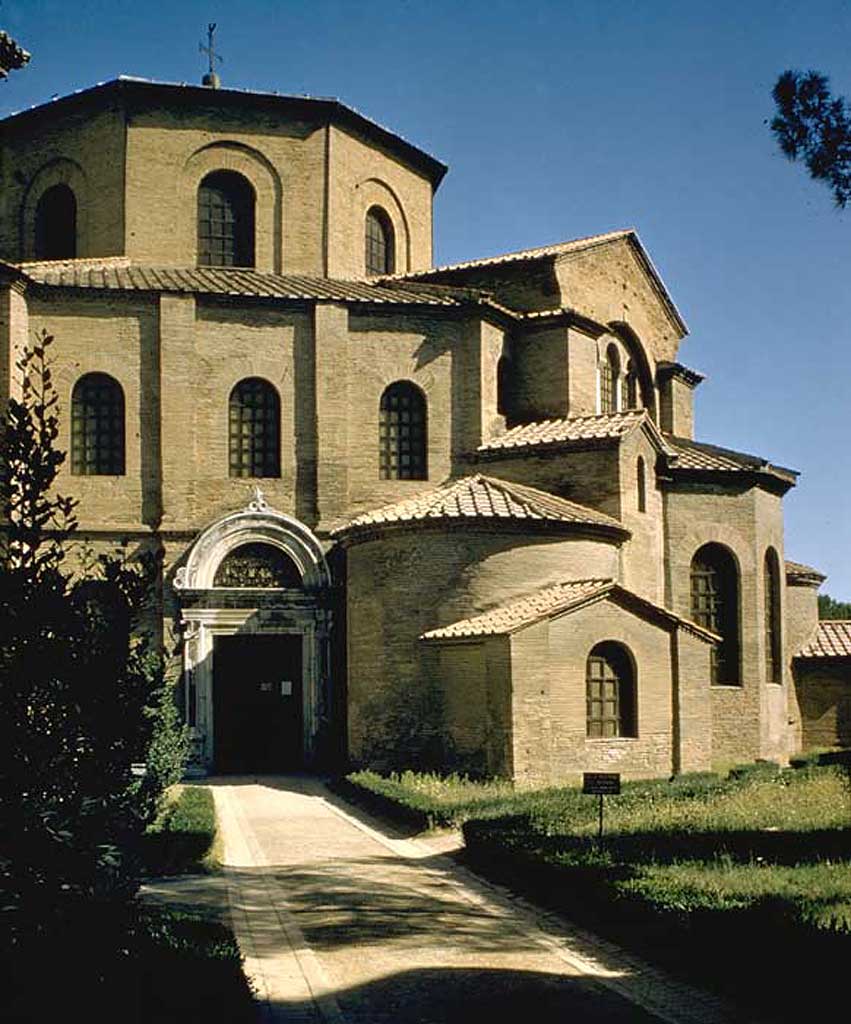
, finished 548, Ravenna, plan, interior view, presbytery mosaics, apse, Christ between archangels, S. Vitale and Bishop Ecclesius, Court of Justinian, Court of Theodora
Ravenna S Vitale exterior.jpg
Ravenna S Vitale Justinian Bishop Maximian clergy courtiers soldiers.jpg
Ravenna S Vitale Justinian with courtier detail.jpg
Ravenna S Vitale looking east.jpg
Ravenna S Vitale plan.jpg
Ravenna S Vitale Theodora and her Court.jpg
Metalwork, Ivory and Manuscripts
Slide 12: Projecta casket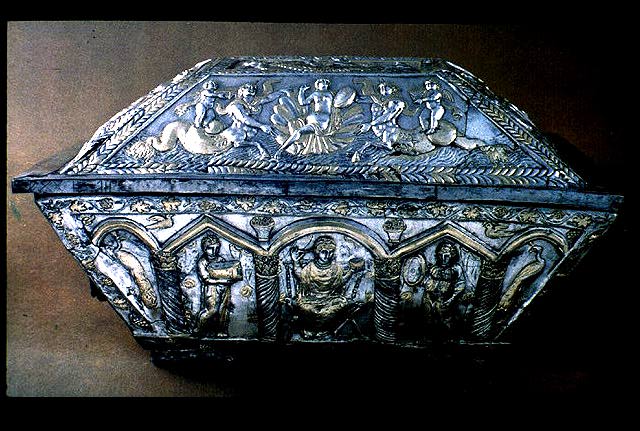
, Esquiline Treasure, 4 th C., British Museum
Slide 13: Apotheosis ivory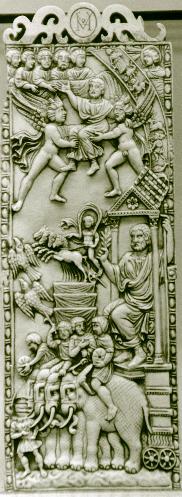
, from a diptych, Rome, ca 400, British Museum
Slide 14: Barberini ivory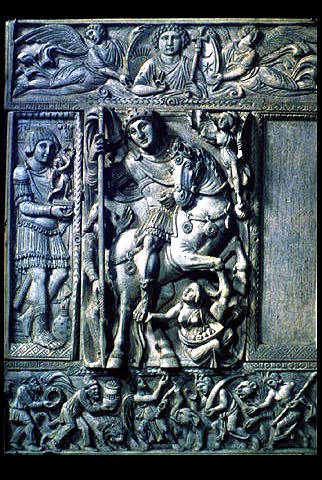
, 6 century, Louvre
Slide 15: Sinope Gospels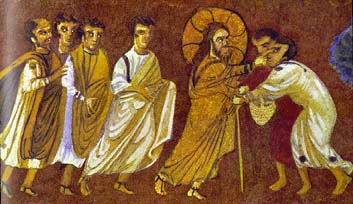
, Christ healing a blind man, folio 29 r, 6 C, Biblioth'que Nationale.
Slide 16: Vienna Genesis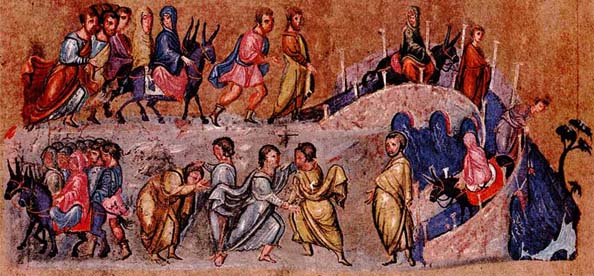
Slide 17: Vienna Genesis Temptation of Joseph 500-600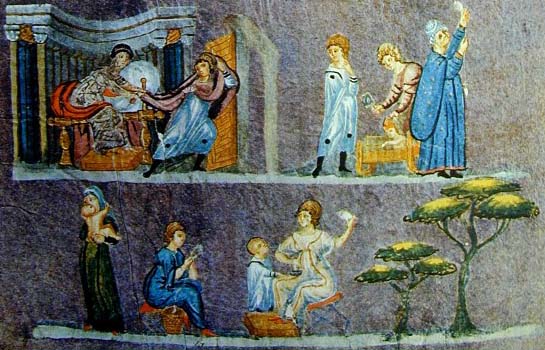
Rebecca at the well, page 13, 6 C, Osterreichische Nationalbibliothek, Vienna.
Icon
Virgin and child, saints and angels, 6 C.,
Slide 18: St Catherine’s, Sinai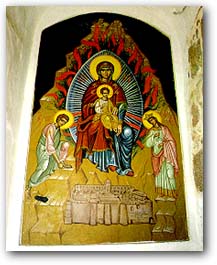
Useful Dates
Constantine the Great: 272 / 3-337
Edict of Toleration: Christianity legalised: 311 / 12
Dedication of Constantinople: 330
Christianity becomes official Roman religion: 392
Council of Ephesus: 431
Traditional end of the western Roman empire: 476
Justinian I: 527 – 565
Suggested Reading List:
For introductory material on the art and architecture of Early
Christianity and Byzantium, with bibliographies for further reading (all available in paperback):
Cormack, R., Byzantine Art (Oxford, 2000).
Lowden, J., Early Christian and Byzantine Art (London, 1997).
Mathews, T., Byzantium. From Antiquity to the Renaissance (New York / London, 1998).
Lyn Rodley, Byzantine Art andArchitecture (1994)
